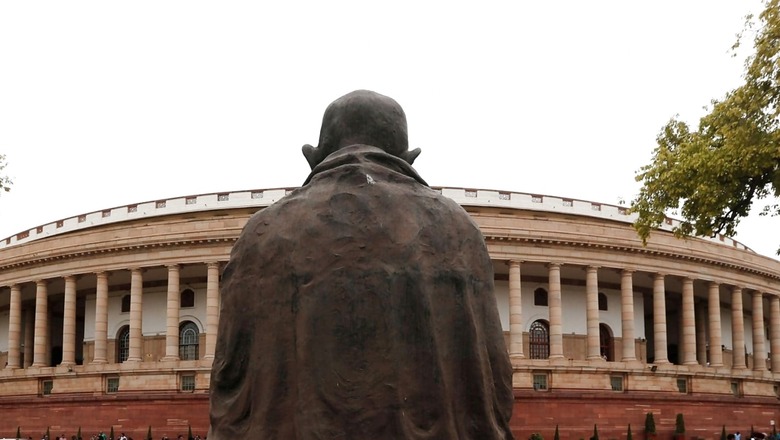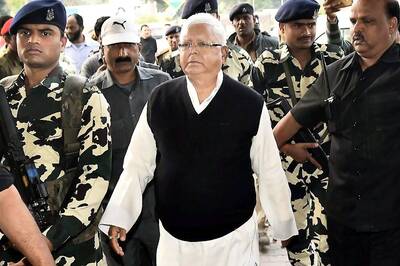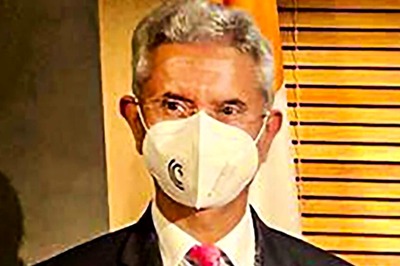
views
Rajya Sabha passed the Dam Safety Bill, 2019, amid demands from the Opposition in Winter Session 2021 for it to be referred to a Select Committee for examination though the Centre’s argument that it had already been passed by Lok Sabha in August 2019 based on a report from a Parliamentary Standing Committee. The Parliament meets over three sessions and less than 100 days year, usually. And the legislators invariably have a lot on their plate. Those who are part of the government have to work on Bills while those in the Opposition have to keep a tab on the workings of the government. Then there is the job of devising and tracking budgets and expenditures while attention also has to be paid to the nitty-gritty of the functioning of Parliament. All this means that the Lok Sabha and the Rajya Sabha cannot devote time to take up every matter that comes before them. Which is why the Parliament relies on committees to handle “a good deal of its business”. Here’s a look at the key ones among them.
What Are Parliamentary Committees?
While there are a number of committees that are set up by Parliament, they mainly fall into one of two categories — standing committees and ad hoc committees. As the name suggests, Standing Committees are “permanent and regular” while ad hoc panels “are appointed for a specific purpose and they cease to exist when they finish the task assigned to them”, which is usually with the submission of a relevant report.
Standing committees are elected or appointed every year, or periodically, but the work they do is of a “continuous nature”. Ad hoc committees are mainly set up to go into a Bill and can either be a Select or Joint Committee. A Select committee is made up of members of the same House of Parliament while a Joint Committee comprises members of both Houses. A Joint Parliamentary Committee (JPC) can also be set up to investigate any important matter and submit its report. Such JPCs were set up to go into the Bofors deal and the 2G Spectrum scam, etc.
How Many Types Of Standing Committees Does Parliament Have?
Financial committees and the Departmentally Related Standing Committees (DRSCs) are prominent examples of standing committees although there are other panels that also fall under this category.
A distinct group among the Standing Committees are the three financial committees — on Estimates, Public Accounts and Public Undertakings — that are tasked with keeping “an unremitting vigil over government expenditure and performance”. Members of Rajya Sabha are present on the Public Accounts and Public Undertakings committees, but the Estimates panel is made up entirely of Lok Sabha members.
Then, there are the 24 DRSCs, which between themselves cover all the ministries and departments functioning under the Union government. The principal focus of the DRSCs is to, among other things, consider the budgetary demands of the various ministries and make reports to the Houses. They also go take up for review any Bill referred by by the presiding officer of either the Rajya Sabha or Lok Sabha.
There are, further, standing committees in each House that perform functions of inquiry, scrutiny and overseeing the day-to-day business of the House. Prominent among these are Privileges Committee, Committee on Government Assurances, Business Advisory Committee, etc.
What Is The Composition Of These Committees?
Each DRSC comprises 31 members — 21 from Lok Sabha and 10 from Rajya Sabha — who are nominated by the Lok Sabha Speaker or the Chair in Rajya Sabha, respectively. Of the 24 DRSCs, eight are serviced by the Rajya Sabha Secretariat while the remaining 16 are served by the Lok
Sabha Secretariat.
The strength of the other committees differs but, where a committee includes members of both Houses, it usually has twice the number of Lok Sabha members as those from Rajya Sabha.
Parliamentary committees are appointed or elected by the House or nominated by its presiding officer and work under his or her direction. They are mandated to present their report to the House or to the presiding officer.
Besides a few exceptions, both Houses are said to have a similar committee structure and the rules for their appointment, terms of office, functions and procedure of conducting business are also more or less similar.
According to parliamentary rules, a minister is not eligible for election or nomination to the financial committees, DRSCs and certain other panels, like those on Government Assurances, Welfare of Scheduled Castes and Scheduled Tribes, etc.
How Do These Committees Meet?
The committees can meet through the year but there are rules for each sitting. To begin with, the quorum — which is the minimum number of members who must be present to make the proceedings valid — has been set at one-third of the total number of members of the committee.
The Lok Sabha Secretariat says that if there is no quorum, the chairperson of the committee “may either suspended the sitting until there is a quorum or adjourn the sitting to some future day”.
Committee meetings are required to be held in private and “are not open to media”, although it can consult domain experts and those whom it deems necessary to look into some matter. The reports of a committee are based on broad consensus but a member may give a note of dissent, which is presented to the House along with the report.

















Comments
0 comment